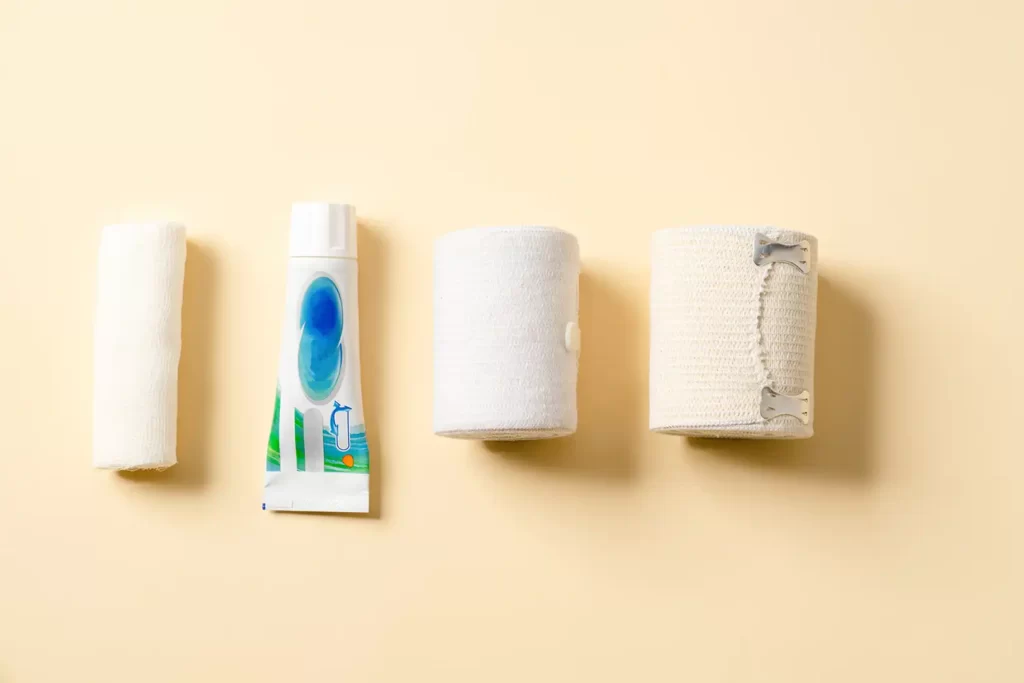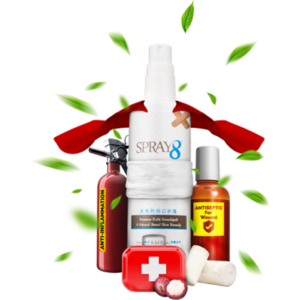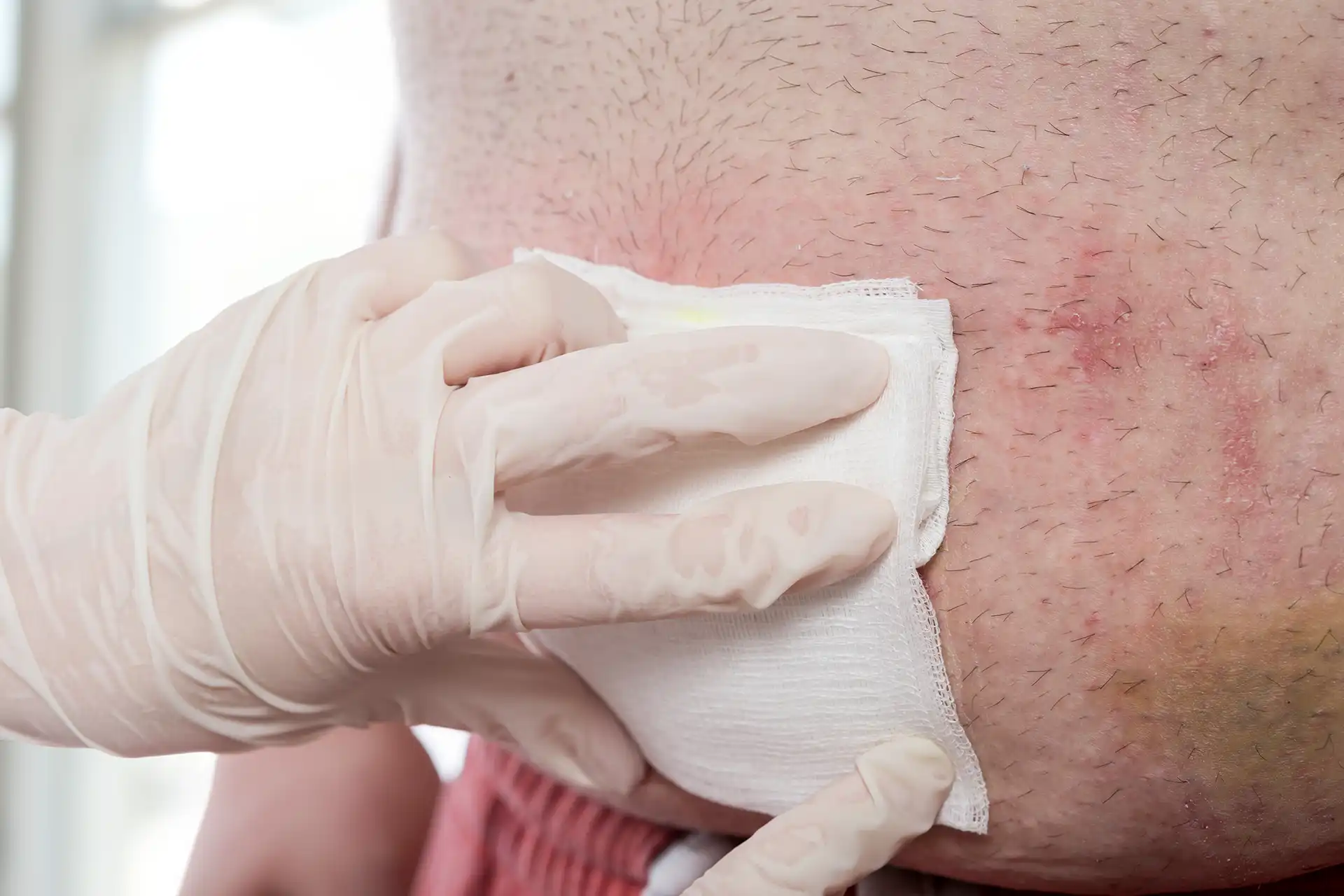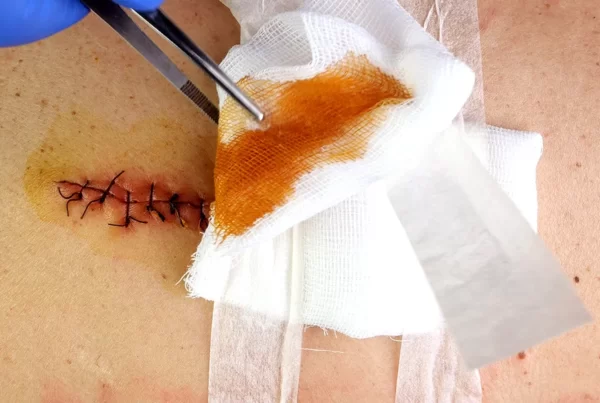There are many different types of wound dressings on the market. It can be confusing to know which one is right for you. This guide will help you understand the different types of dressings and how to care for your wounds. If you have any questions, please consult a medical professional who can help you choose the best dressing for your specific wound – this will be a great resource for you!

Understanding the Different Types of Wound Dressing
There are many wound dressing options available, each designed to address a specific wound need. With so many wound dressing choices available, it’s important for any wound care professional or caregiver to understand the different types of wound dressings and how they could best be used. Depending on the wound being treated, factors such as size, type and location may impact the wound dressing selection. Certain wound dressings also offer advantages over others depending on wound characteristics such as drainage levels. Wound dressings may range from traditional products such as gauze and non-adherent pads to more specialized wound dressings like alginates, hydrofibers and antimicrobials meant to cleanse and protect wounds over time. Being aware of each of the wound dressing’s unique properties is important in order to choose the best option that can ensure there is optimal healing for any given wound.
Preparing Your Wounds for Dressing
Wound dressing is a crucial step when it comes to the wound healing process. It not only protects your wound from further contamination and injury, but can also help speed up the healing process. Before going ahead with wound dressing, it is important to prepare your wound for dressing by cleansing the wound bed and surrounding skin with an antiseptic solution; this will help rid the wound of dirt and bacteria from the environment. Following that, gently blot out any exudates coming from your wound to remove moisture before adding a light coating of wound cream or gel to lubricate the wound. Lastly, cover up your wound securely with an appropriate wound dressing material such as gauze or film dressings and secure it in place using medical tape if necessary. By taking such steps for preparing wounds for dressing, you are ensuring that your wound stays clean and dry, allowing it to heal at its fastest and most effective rate.
What to Look for When Buying a Wound Dressing
When shopping for wound dressings, there are several factors to consider. Above all, look for dressings that are specially designed for wound care, as opposed to traditional bandages used for everyday cuts. Wound dressings should be made from materials such as foam or alginate that are porous and breathable and provide a better healing environment than other more rigid materials. Choose a wound dressing that is compatible with wound fluids, such as wound cleansers, and offers the ability to adjust wetness levels throughout treatment. As wound dressing selection can depend on the type of wound being treated, consider specific characteristics of the wound such as size, shape and level of exudate when making your decision. Visiting a certified healthcare professional is also recommended if you have questions or aren’t sure which wound dressing best suits your needs.
How to Apply and Maintain Your Wound Dressings
When wound dressing is necessary to promote healing, proper application and maintenance of the dressings is critical. To apply a wound dressing properly, start by cleaning the wound area with a sterile saline solution or wound cleanser. After the wound is clean, you can use wound-specific dressing materials such as gauze, bandages and adhesive tapes to cover the wound. Once your wound dressing is in place, it’s important to regularly monitor for signs of infection and bleeding. Depending on the type of wound dressing used, it may need to be changed frequently to prevent infection or skin breakdown from occurring. Before changing wound dressings, again make sure you clean the wound with a sterile saline solution or wound cleanser in order to avoid introducing further bacteria into your wound. With diligent attention and maintenance of your wound dressing, you can help create an ideal environment for healing of your wound.
Common Misconceptions About Wound Dressings
It is common for people to hold misconceptions about wound dressings and wound healing, which can lead to serious health risks or unnecessary pain. One of the biggest misconceptions is that wound dressings must be changed often to promote healing; however, wound dressings should not be changed unless they are soiled or wound drainage is greater than expected. Additionally, a popular misconception is that wound dressings are not needed if wound healing is progressing along as expected; however, wound dressing should be used until the wound has completely healed. Finally, some people think that wound dressings are only suitable for certain type of wounds when in fact they can be used on a variety of wounds including painful ulcers, large wounds with heavy drainage, minor scrapes cuts and burns. Understanding these common misconceptions about wound dressings will help ensure better wound outcomes.
The Benefits of Using a Quality Wound Dressing
A wound dressing is an essential component in wound care. Quality wound dressings can help speed up the healing process by providing a protective barrier against infection, while keeping the wound moist and promoting natural healing. In addition, quality wound dressings are breathable and non-adherent which allows for wound healing without disturbing existing tissue. By using a quality wound dressing like those available from reputable companies, you can feel confident knowing that your wound will receive the best possible treatment.
In conclusion, proper wound dressings can reduce the risk of infection and speed up the healing process by providing protection from external microorganisms. With an understanding of the different types of wound dressing, how to prepare your wounds for dressing, what to look for when buying a wound dressing, how to apply and maintain it and the common misconceptions that surround dressing wounds, you can be better informed when it comes to choosing which one is best suited for your needs. With benefits like enhanced safety and quicker adhesion, quality wound dressings are becoming increasingly popular as a safe and effective way to protect wounds both large and small. By using quality wound dressings you can find increased comfort and satisfaction knowing you are helping promote healthy skin care habits so you can get back to doing the things you love sooner rather than later.
Consider Spray8 as a complementary treatment for your wounds – they provide superior protection against bacteria while stimulating the regeneration of skin.







